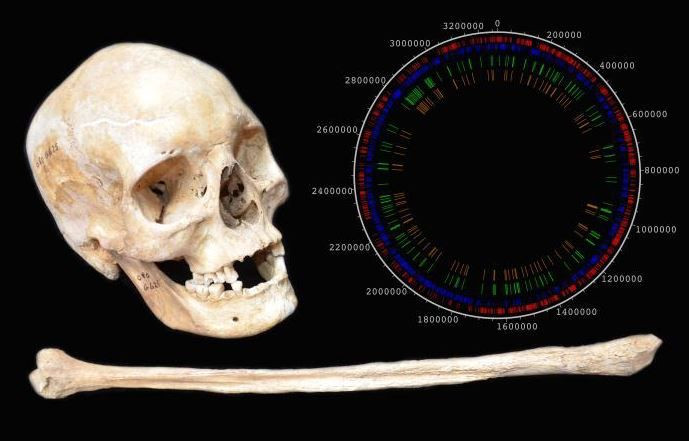Reconstructed Leprosy DNA Reveals Genetic History: Hansen’s Disease Unchanged Since Middle Ages

Leprosy, a bacterial infection that was endemic in Europe in the Middle Ages, disfigured victims grotesquely enough that they were shunned by hostile and superstitious communities throughout history. Also known as Hansen's disease, leprosy still infects at least 219,000 new people worldwide each year, despite being highly curable.
An international team of researchers made a surprising discovery after digging up the skeletal remains of five medieval lepers who lived in the United Kingdom, Sweden, and Denmark between the 10th and 14th centuries.
The bones contained extraordinarily well-preserved DNA from Mycobacterium leprae, the bacteria that causes leprosy, allowing them to reconstruct the whole genome of the organism. After comparing the medieval leprosy pathogen to the strain that still infects patients today, they discovered that remarkably little has changed in the past 1,000 years of its genetic history.
The researchers, led by Johannes Krause of Tübingen University in Germany and Stewart Cole from EPFL Lausanne in Switzerland, used a basic DNA capture technique called "shotgun sequencing" to reconstruct the genome of M. leprae from "Jorgen 625," the skeleton with the best-preserved bacterial sample.
More sophisticated methods were used to assemble genomes from DNA fragments in other samples.
They compared the five ancient M. leprae genome sequences to those of 11 bacterial samples collected from modern leprosy patients from around the world, and performed side-by-side analyses.
The results, published in the journal Science, showed that there have only been about 800 distinct genetic mutations among all the M. leprae samples in the past millennium — a remarkably small number for such an infectious disease.
Since the bacteria mutates so slowly, the researchers believe that Hansen's disease is less likely to become resistant to antibiotics.
They also found that modern strains of leprosy in the Americas, which are often carried by armadillos, originally came from Europe, and that a strain that is currently associated with the Middle East existed in medieval Europe.
In the medieval skeletal samples, the bacterial DNA was somehow even better preserved than human DNA — which the researchers wrote is probably because the leprosy bacterium's remarkably thick cell wall keeps the DNA inside from degrading.
"Since the M. leprae DNA degrades slower than human-and probably other vertebrate-DNA, it should be possible to extract and sequence M. leprae DNA from environments and time periods in which we would not usually find DNA preserved, like the tropics or early, prehistoric time periods," said Krause in a news release. "So potentially we could study samples from the time of the disease's origin."
The extreme longevity of some types of bacterial DNA opens up the possibility that archaeologists may be able to find disease pathogens that are much older than the maximum window of mammalian DNA, which is typically about one million years in prehistory, he added.
Source: Schuenemann VJ, Singh P, Mendum TA, et al. Genome-Wide Comparison of Medieval and Modern Mycobacterium leprae. Science. 2013.



























